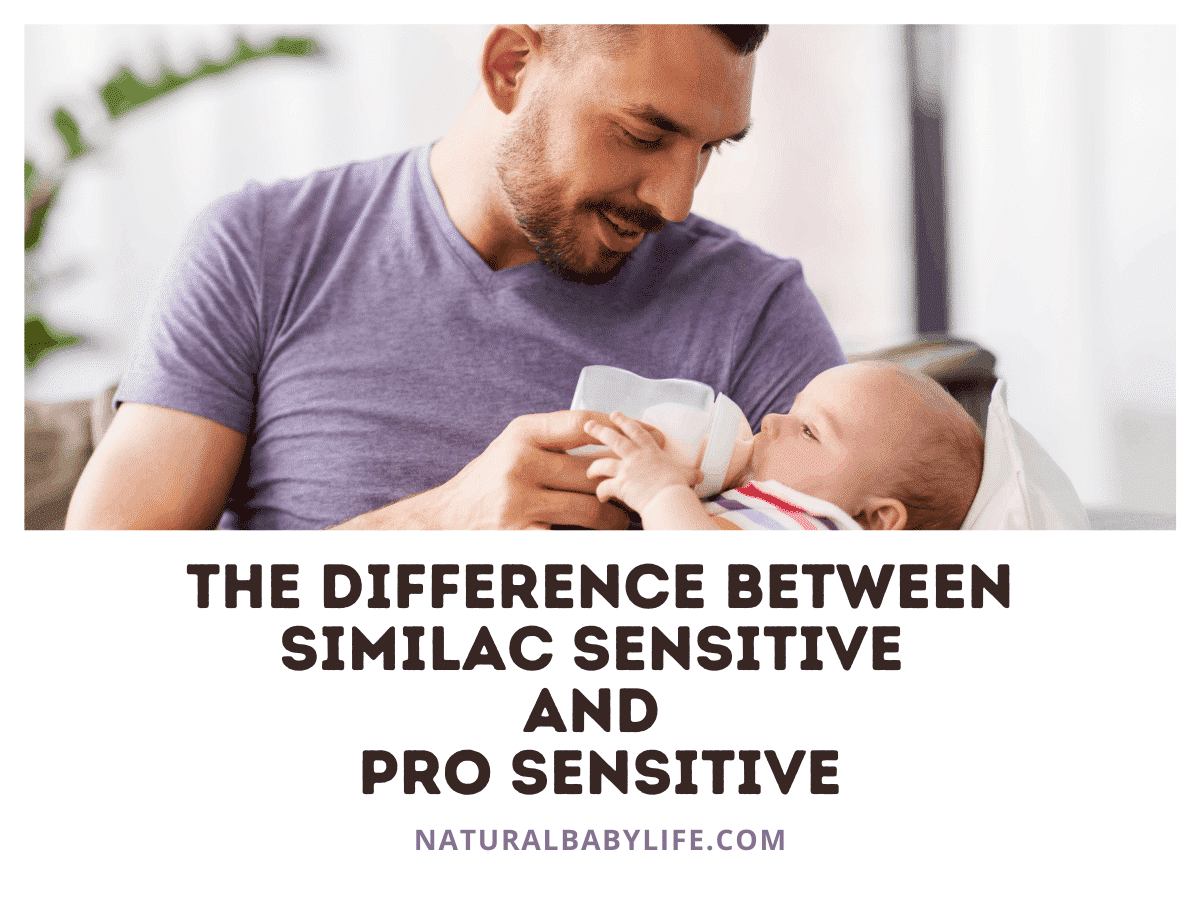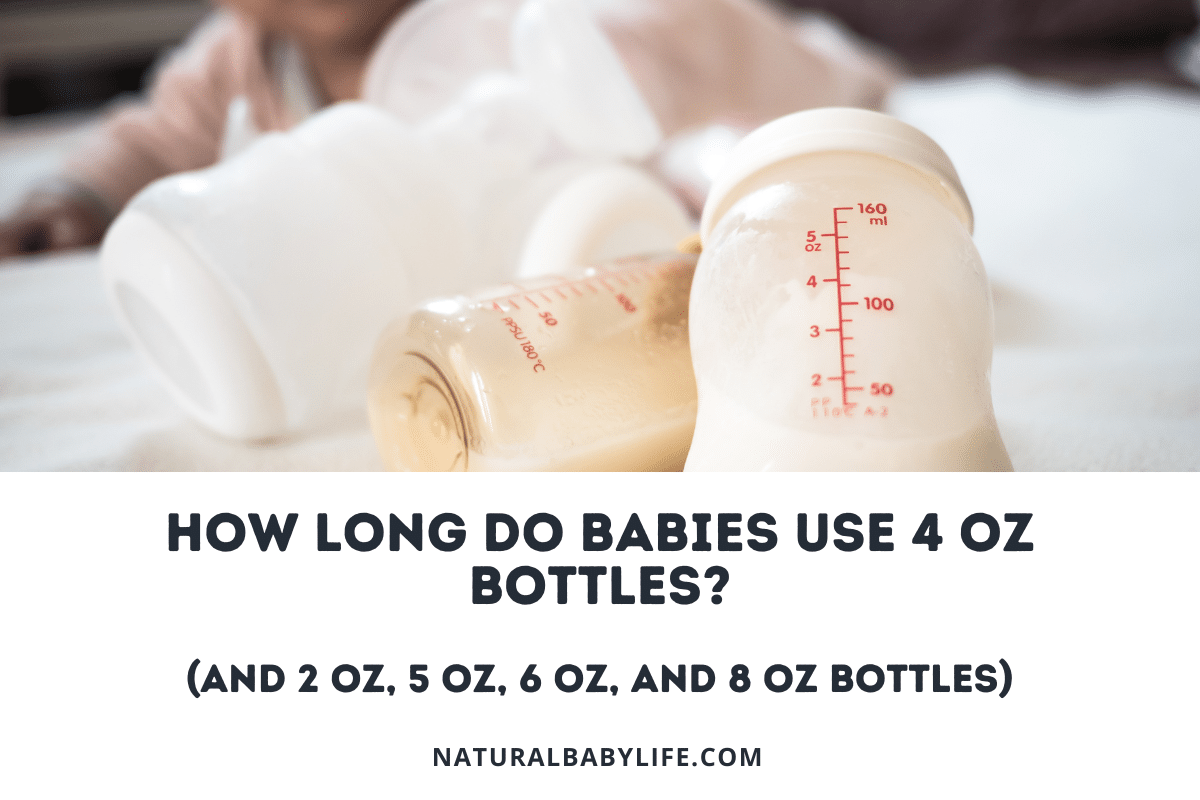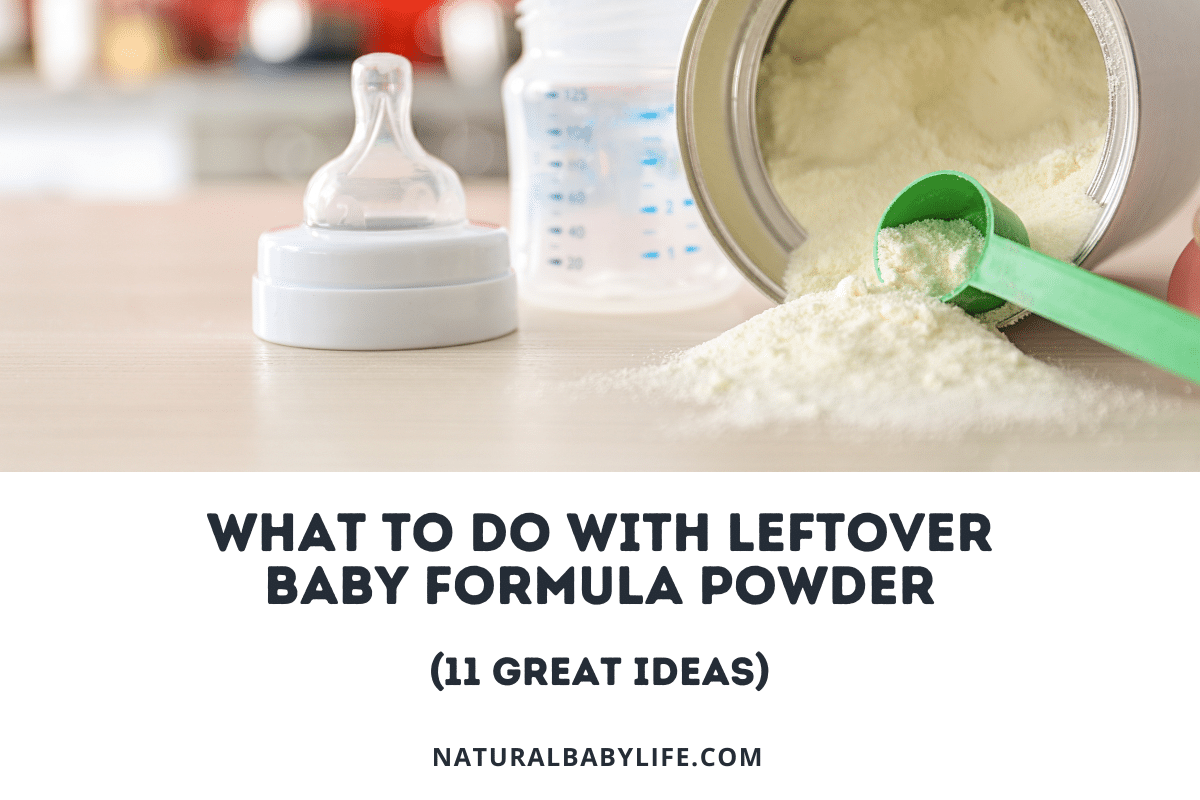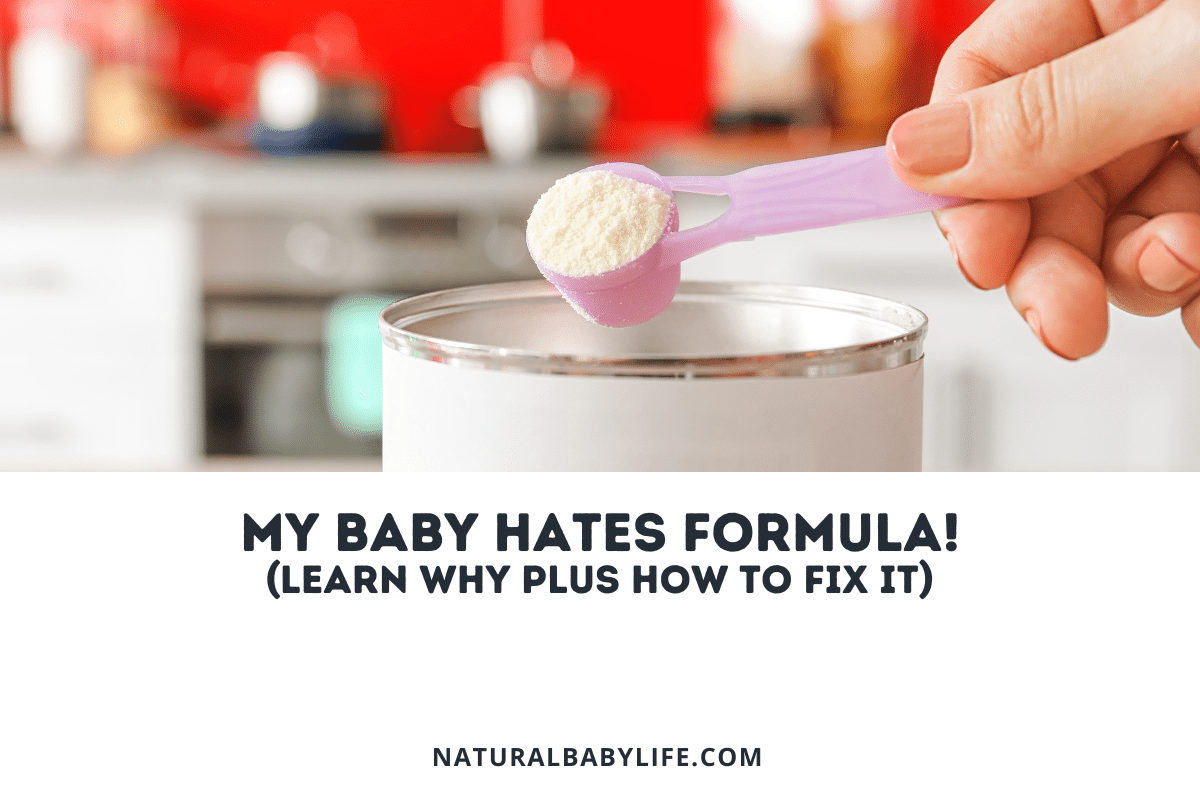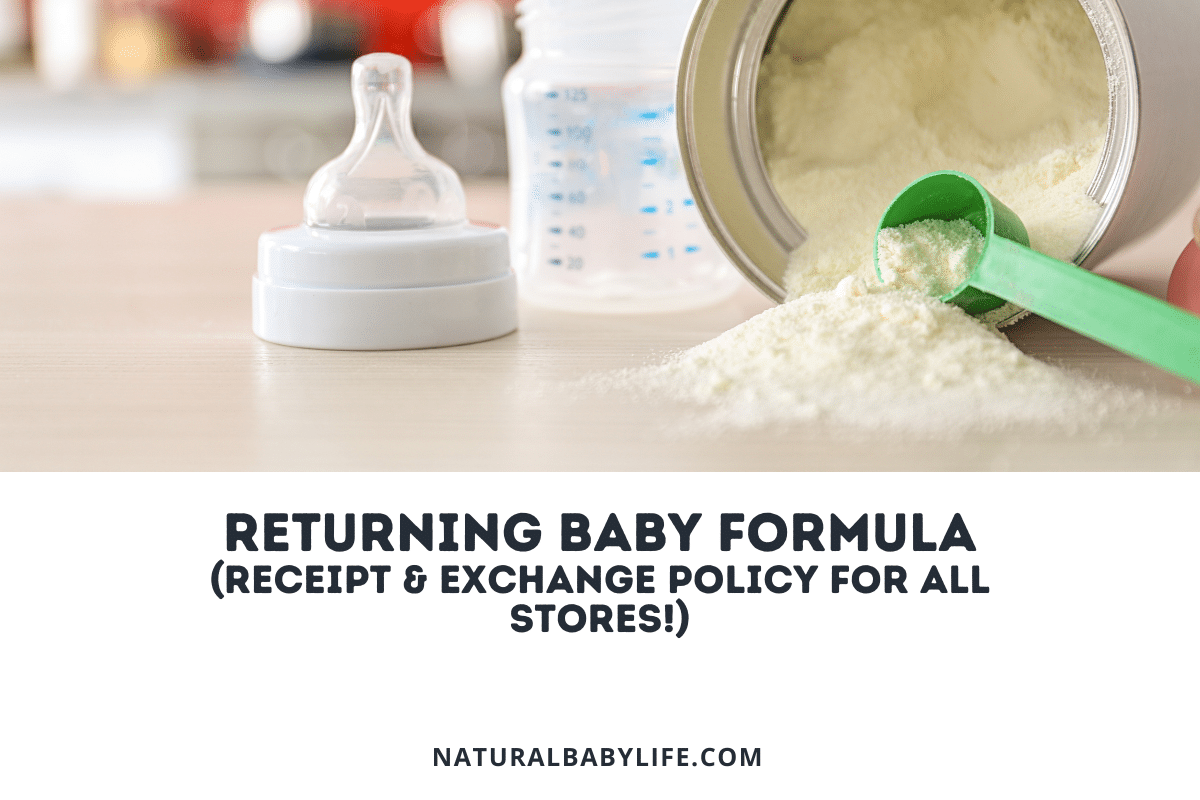A lot of parents have been there…Standing in the formula section at the grocery store wide-eyed desperately trying to decide which of the dozens of choices are best for their little one. If your child requires a formula designed for sensitive tummies, then that can add even more urgency and confusion to the situation. While searching for a formula that will help calm colic, alleviate digestive upset, or simply be more manageable for your child you likely have compared Similac Sensitive and Similac Pro Sensitive. Both are designed for easier digestion, but what’s actually the difference?
The difference between Similac Sensitive and Pro Sensitive is that the Pro version includes Human Milk Oligosaccharide (HMO) in the form of their special 2′-FL HMO ingredient and it does not include any genetically modified ingredients. Both the Similac Sensitive and Pro Sensitive are designed to provide nutrition for lactose-intolerant babies.
“Sensitive” infant formulas are designed primarily for babies with lactose intolerance, allergies or other digestive issues and may all have similar purposes, but their ingredient lists, added benefits, and branding can get confusing making the choice difficult for parents.
Table of Contents
What are Similac Sensitive and Similac Pro Sensitive
Does your little one struggle with frequent vomiting, gas, spit-up, fussiness, diarrhea and other discomforts associated with a lactose intolerance? This can be as painful for parents as it is for babies and can cause a lot of stress when it comes to feedings.
Similac Sensitive and Similac Pro Sensitive are both formulas designed to help babies with lactose-intolerance to be well-nourished without all the fuss (literally). The key differences between these two similar formulas are in the added ingredients. They both promise to alleviate digestive discomforts and symptoms but offer different nutritional advantages.
Unfortunately, the instance of lactose-intolerance affects as many as 70% of the world-wide population while cow’s milk allergies can affect up to 2-3% of babies in the US. The good news is that up to 80% of babies go on to be able to tolerate lactose and dairy later in life (usually by age 3). But if most baby formulas are cow’s milk-based then how can parents feed their lactose-sensitive babies well with formula?
Enter sensitive-style baby formulas!
Formulas like Similac Sensitive and Similac Pro Sensitive are specially designed to help alleviate discomforts like fussiness, colic, and gas and other discomforts experienced by babies who are sensitive to lactose or have other digestive issues.
Sensitive baby formulas are still made using a cow’s milk base, but the lactose has been removed and replaced with another type of sugar (sometimes corn syrup or sucrose, also known as “table sugar”) more easily tolerated by those with lactose sensitivity.
Despite the change in sugar and carbohydrate content, these sensitive formulas promise to deliver a nutritionally whole formula meant to help baby grow and develop in a healthy way. They can also offer additional benefits like probiotics, and vitamins and minerals often found in breastmilk.
Understanding lactose intolerance in babies
The inability of a body to digest lactose, the sugar found in milk, is known as a lactose intolerance. This is a digestive issue that is commonly confused with a milk allergy, which is an immune system issue. Lactose intolerance is likely to cause physical discomfort like gas, diarrhea, and colic while a milk allergy can be life-threatening.
In order for the bodies large and small to digest lactose, they have to create an enzyme called lactase, which is created in the small intestine. Lactase breaks down lactose into glucose and galactose that are both used by the body as energy after being absorbed by the intestines.
If one’s body doesn’t produce lactase then it cannot breakdown lactose causing the intolerance and the uncomfortable symptoms that come with it.
Lactose is found in many types of foods, including one’s you wouldn’t expect like pre-packaged and prepared foods, and even medications. It’s important to check the ingredient label to know which foods your child should avoid if they are lactose intolerant.
Common ingredients on a label that could indicate lactose includes:
- Milk
- Lactose
- Whey
- Curds
- Milk by-product(s)
- Dry milk solids
- Nonfat dry milk powder
Common symptoms of lactose intolerance
Lactose intolerance is often discovered and diagnosed in the first year of life. Symptoms can occur within minutes or hours of ingesting lactose and include:
- Nausea, vomiting
- Gas, bloating, cramps
- Loose or large stools
- Watery diarrhea
- Fussiness
Getting a lactose intolerance diagnosis
First, it’s important to speak with your pediatrician if you suspect that your baby has lactose intolerance. Keep careful notes of baby’s symptoms and temperament surrounding feeding to help your pediatrician better understand how to help your child.
To start, your pediatrician may recommend an elimination diet, which is meant to eliminate all dairy products from your child’s diet for a period of time to see if symptoms resolve before slowly reintroducing those foods to see if symptoms return.
Your pediatrician may also recommend medical tests to determine if your child is lactose intolerant. A hydrogen breath test is commonly used to discover digestive issues like lactose intolerance. It’s a simple test that measures the amount of hydrogen excreted in the breath which can indicate an inability to digest foods properly. A lactose-intolerance test can also be administered, which is a blood test. A stool sample can also be used to check for lactose intolerance in children and babies
If it’s concluded your child is lactose intolerant, your pediatrician will offer solutions to help your child eat more comfortably while still getting proper nutrition to grow and develop properly.
Similac Sensitive vs Similac Pro Sensitive
Both Similac Sensitive and Similac Pro Sensitive are formulas designed for babies who have a lactose intolerance or other digestive sensitivity making regular formulas difficult on their systems. It’s important to note that while neither of these formulas is completely lactose-free, they can offer significant relief of the discomforts associated with lactose intolerance.
The differences between these two formulas is subtle and found on the list of added ingredients.
Similac Sensitive is formulated with their signature “OptiGRO” blend of vitamins and minerals, which helps to support baby’s growth, brain, and eye development with DHA, Lutein, and Vitamin E.
Similac Pro-Sensitive is formulated to be closer to breastmilk offering their signature “2’-FL HMO” (Human Milk Oligosaccharide), which, in addition to the standard ingredients, offers additional support for immune system development through prebiotics.
While both formulas are offering relief from common discomforts associated with a lactose intolerance, Similac Pro Sensitive includes additional immune support through prebiotics while offering complete nutrition for babies and has slightly less sugar.
Similac Sensitive
Similac Sensitive is an easy-to-digest, milk-based formula designed for sensitive tummies. This baby formula is a nutritionally complete formula designed to alleviate fussiness and gas due to lactose sensitivity or digestive issues and features their signature “OptiGRO” blend of DHA, Lutein and Vitamin E to support baby’s overall growth, brain, eye and immune system development.
Ingredients
Corn Syrup, Milk Protein Isolate, High Oleic Safflower Oil, Sugar, Soy Oil, Coconut Oil, Galactooligosaccharides. Less than 2% of: C. Cohnii Oil, M. Alpina Oil, Beta-Carotene, Lutein, Lycopene, Calcium Phosphate, Potassium Chloride, Potassium Citrate, Sodium Citrate, Magnesium Phosphate, Ascorbic Acid, Choline Chloride, Calcium Carbonate, Magnesium Chloride, Ascorbyl Palmitate, Ferrous Sulfate, Choline Bitartrate, Taurine, m-Inositol, Zinc Sulfate, L-Carnitine, Mixed Tocopherols, Niacinamide, d-Alpha-Tocopheryl Acetate, Calcium Pantothenate, Vitamin A Palmitate, Cupric Sulfate, Thiamine Chloride Hydrochloride, Riboflavin, Pyridoxine Hydrochloride, Folic Acid, Manganese Sulfate, Potassium Iodide, Phylloquinone, Biotin, Sodium Selenate, Vitamin D3, Cyanocobalamin, Potassium Hydroxide, and Nucleotides (Adenosine 5’-Monophosphate, Cytidine 5’-Monophosphate, Disodium Guanosine 5’-Monophosphate, Disodium Uridine 5’-Monophosphate).
Nutritional value
- Serving size: 100 Cal (5.3 fl oz, prepared as directed)
- Calories: 100
- Volume, mL: 155.5
- Protein, g: 2.1
- Fat, g: 5.4
- Carbohydrate, g: 11.1
- Water, g: 140
- Linoleic Acid, mg: 1000
Includes vitamins: A, D, E, K, B1, B2, B6, B12, C, Niacin, Folic Acid, Biotin, Choline, and others
Includes minerals: Calcium, Iron, Zinc, Sodium, Potassium, and others
Pros
Offers relief of digestive issues and discomfort for sensitive tummies due to lactose intolerance. Also offers additional support for growth and development of the eyes, brain, and immune system through a blend of vitamins and minerals necessary for healthy bodies.
Similac Sensitive is often found to be less expensive than the Pro Sensitive formula.
Cons
Is not as nutritionally dense as the Pro-Sensitive formula as it does not include the added prebiotic blends naturally found in breastmilk. Also contains slightly more artificial carbohydrates (corn syrup).
Similac Pro Sensitive
Similac Pro-Sensitive is formulated for infants who experience fussiness and gas due to lactose sensitivity. Similac Pro-Sensitive includes their signature “2’-FL human milk oligosaccharide,” which is an immune-nourishing prebiotic that’s also found in breastmilk and supports baby’s developing immune system. Also includes DHA, Lutein, and Vitamin E for helping support the baby’s brain and eye development.
Ingredients
Corn Syrup, Milk Protein Isolate, High Oleic Safflower Oil, Sugar, Soy Oil, Coconut Oil. Less than 2% of: C. Cohnii Oil, M. Alpina Oil, 2′-Fucosyllactose, Fructooligosaccharides, Beta-Carotene, Lutein, Lycopene, Potassium Chloride, Sodium Citrate, Calcium Phosphate, Potassium Citrate, Magnesium Phosphate, Ascorbic Acid, Choline Chloride, Ascorbyl Palmitate, Ferrous Sulfate, Choline Bitartrate, Taurine, m-Inositol, Magnesium Chloride, Zinc Sulfate, Calcium Carbonate, L-Carnitine, Mixed Tocopherols, Niacinamide, d-Alpha-Tocopheryl Acetate, Calcium Pantothenate, Vitamin A Palmitate, Copper Sulfate, Thiamine Chloride Hydrochloride, Riboflavin, Pyridoxine Hydrochloride, Folic Acid, Manganese Sulfate, Potassium Iodide, Phylloquinone, Biotin, Sodium Selenate, Vitamin D3, Vitamin B12, Potassium Hydroxide, and Nucleotides (Adenosine 5’-Monophosphate, Cytidine 5’-Monophosphate, Disodium Guanosine 5’-Monophosphate, Disodium Uridine 5’-Monophosphate)
Nutritional value
- Serving size: 100 Cal (5.3 fl oz, prepared as directed)
- Calories: 100
- Volume, mL: 156
- Protein, g: 2.1
- Fat, g: 5.4
- Carbohydrate, g: 10.9
- Water, g: 141
- Linoleic Acid, mg: 1000
Includes vitamins: A, D, E, K, B1, B2, B6, B12, C, Niacin, Folic Acid, Biotin, Choline, and others
Includes minerals: Calcium, Iron, Zinc, Sodium, Potassium, and others
Pros
Similac Pro-Sensitive, while helping to alleviate discomforts of lactose intolerance, is formulated to be closer to breastmilk and includes DHA, Lutein, and Vitamin E for brain, eye and immune health in addition to their “2’-FL” blend, which is a prebiotic naturally found in breastmilk adding another layer of immune system support.
Pro-Sensitive has slightly less sugar (corn syrup) than Similac Sensitive, so if that is of concern then Pro-Sensitive may be the better choice for you. It also contains non-GMO ingredients.
Cons
Similac Pro-Sensitive is found to be slightly more expensive at online retailers.
The difference between these two formulas is subtle and even the Similac website doesn’t make clear the advantages or variations in one over the other. Your baby will be the ultimate decision-maker here. While one may be more cost-effective or nutritionally beneficial, your baby will let you know which one they prefer!
However, if nutritional benefits are your primary concern, then Similac Pro-Sensitive, while being slightly more expensive, is offering additional support your baby needs for healthy development without increasing the added sugars. Be sure to speak with your pediatrician before switching your baby’s formula and talk through which one will be most appropriate for your child based on their needs.

